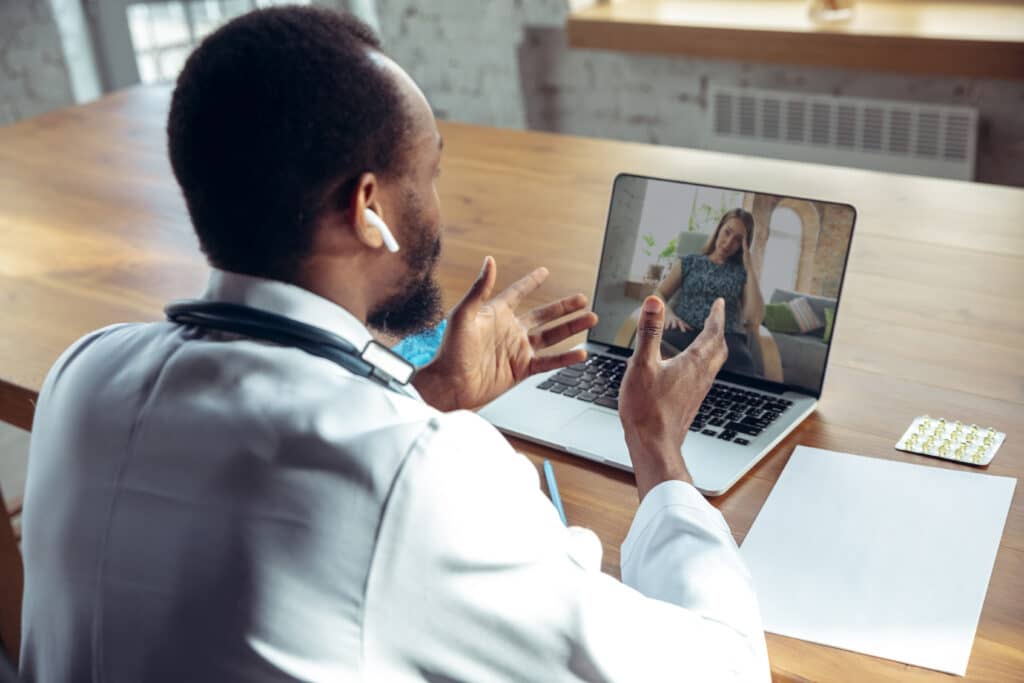
In the ever-evolving landscape of healthcare, remote monitoring solutions are emerging as a powerful force that is poised to transform the way patients receive care and how providers deliver it. With advancements in technology and a shift towards patient-centered approaches, the future of remote monitoring holds great promise for revolutionizing healthcare.
In this blog post, we will explore the exciting developments on the horizon and the transformative potential of remote monitoring solutions.
The implementation of remote monitoring solutions has proven to be a game-changer in enhancing patient outcomes by enabling timely interventions and personalized care. Through telehealth technology, healthcare providers can continuously monitor patients’ vital signs, track medication adherence, and gather real-time data. This wealth of information empowers healthcare professionals to make informed decisions and intervene before a potential health crisis occurs.
Remote patient monitoring devices, such as wearable sensors and mobile health apps, provide patients with convenient ways to track their health and receive feedback from healthcare providers. For example, patients with chronic conditions like diabetes can use glucose meters that transmit their blood sugar levels to the provider’s system.
This enables healthcare professionals to adjust treatment plans, provide necessary guidance, and prevent adverse events. By monitoring activities of daily living, remote monitoring solutions can also detect changes in energy levels, exercise habits, and sleep patterns, allowing for early interventions and personalized care adjustments that optimize patient outcomes.
Furthermore, research has demonstrated the effectiveness of remote monitoring solutions in reducing hospital readmissions. Patients who use remote patient monitoring devices have shown a remarkable 60% reduction in hospital readmissions compared to those who do not utilize such tools. This reduction in readmissions not only improves healthcare quality and patient satisfaction but also contributes to significant cost savings for healthcare systems.
Another significant advantage of implementing remote monitoring solutions is the ability to streamline healthcare delivery and enhance efficiency. By leveraging innovative technologies, healthcare professionals can remotely monitor patients’ health status, reducing the need for frequent in-person visits.
This remote approach allows providers to extend their reach, especially to patients in rural or underserved areas, ensuring they receive the care they need regardless of their location.
Remote monitoring solutions have proven to be particularly beneficial for elderly or vulnerable patients who may face challenges when it comes to accessing care in traditional healthcare settings. These technologies enable healthcare providers to monitor patients’ conditions, intervene as needed, and prevent unnecessary emergency room visits or hospital admissions.
By reducing the strain on healthcare facilities, remote monitoring solutions optimize resource allocation, promote better continuity of care, and enhance overall healthcare quality.
However, it’s important to note that implementing remote monitoring solutions does come with its set of challenges. Let’s explore these challenges and how they can be overcome to maximize the benefits of this revolutionary technology:
The successful implementation of remote monitoring solutions requires a robust infrastructure and technology framework. Healthcare organizations need to invest in secure and reliable communication systems, internet connectivity, and data storage capabilities. This includes establishing protocols for transmitting data securely between patients’ devices and healthcare providers’ systems. Additionally, training staff on using these technologies and ensuring compliance with privacy regulations are crucial steps in overcoming this challenge.
Healthcare organizations should assess their existing infrastructure and technology capabilities and make necessary upgrades or partnerships to ensure they can support remote monitoring solutions effectively. This may involve collaborating with telecommunication providers or partnering with technology firms specializing in remote monitoring solutions.
As remote monitoring solutions involve the transmission and storage of sensitive patient data, it is essential to address concerns regarding data security and privacy. Healthcare organizations must adhere to stringent security protocols and ensure that patient information is encrypted at all stages, from transmission to storage. Implementing comprehensive data protection measures and regular audits can help alleviate concerns for both patients and healthcare providers.
Collaborating with trusted technology partners who prioritize data security and have robust security measures in place is essential. Healthcare organizations should conduct thorough assessments of potential technology providers and ensure that they have adequate safeguards in place to protect patient data.
The success of remote monitoring solutions heavily relies on user adoption and acceptance. Patients and caregivers may initially have concerns or resistance to incorporating new technologies into their healthcare routines. It is crucial for healthcare providers to educate patients about the benefits of remote monitoring and provide ongoing support to ensure their comfort and confidence in using the technology effectively.
Healthcare organizations can conduct training sessions, provide detailed user guides, and offer technical support helplines to address any concerns or difficulties patients may encounter. Encouraging open communication and feedback from patients can also help healthcare providers improve the user experience and address any issues promptly.
Overcoming these challenges requires collaboration and commitment from healthcare organizations, technology providers, and policymakers. By effectively addressing infrastructure and technology requirements, ensuring data security and privacy, and focusing on user adoption and acceptance, remote monitoring solutions can revolutionize healthcare delivery and improve patient outcomes on a broader scale.
As the healthcare industry continues to embrace technological advancements, remote monitoring solutions are gaining traction as a transformative force in healthcare delivery. By leveraging telehealth technology and remote patient monitoring, healthcare providers can deliver personalized care, enhance patient outcomes, and streamline healthcare delivery.
To fully unlock the benefits of remote monitoring solutions, healthcare organizations must address infrastructure and technology requirements, ensure data security and privacy, and focus on user adoption and acceptance. By overcoming these challenges, healthcare providers can harness the power of innovative technologies to revolutionize healthcare delivery and improve the lives of patients across the globe.
Contact us today to embark on your journey towards transforming healthcare for patients and providers.